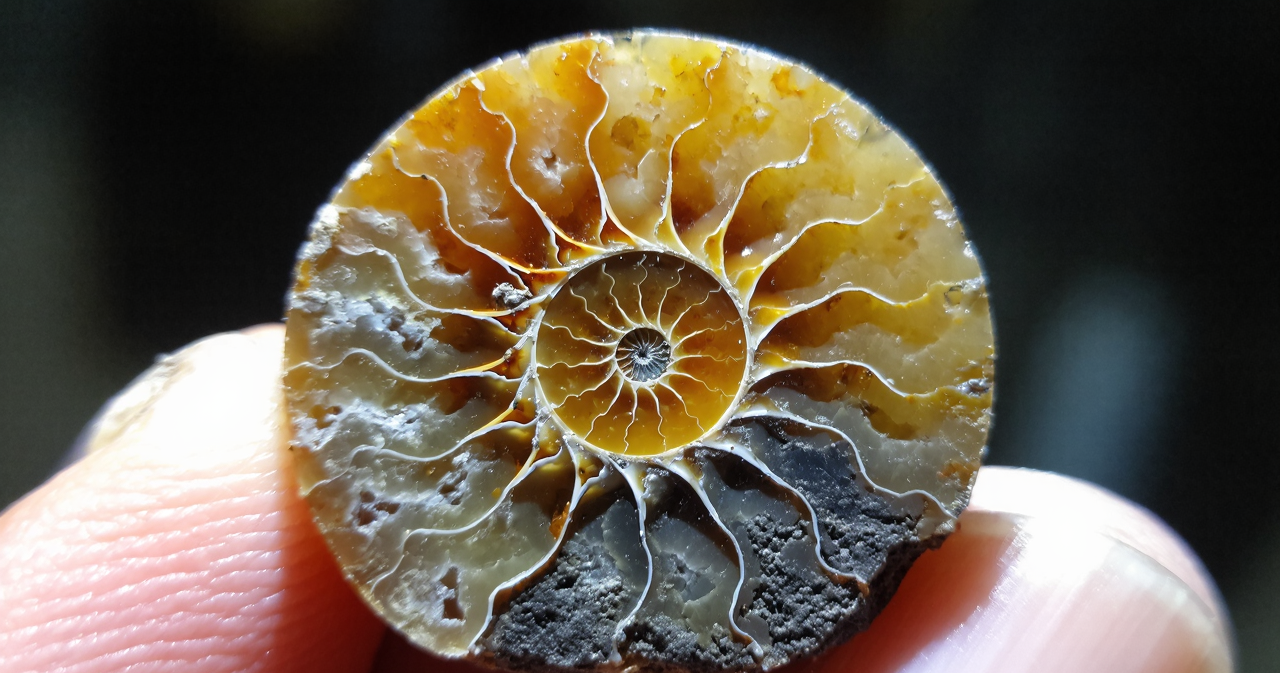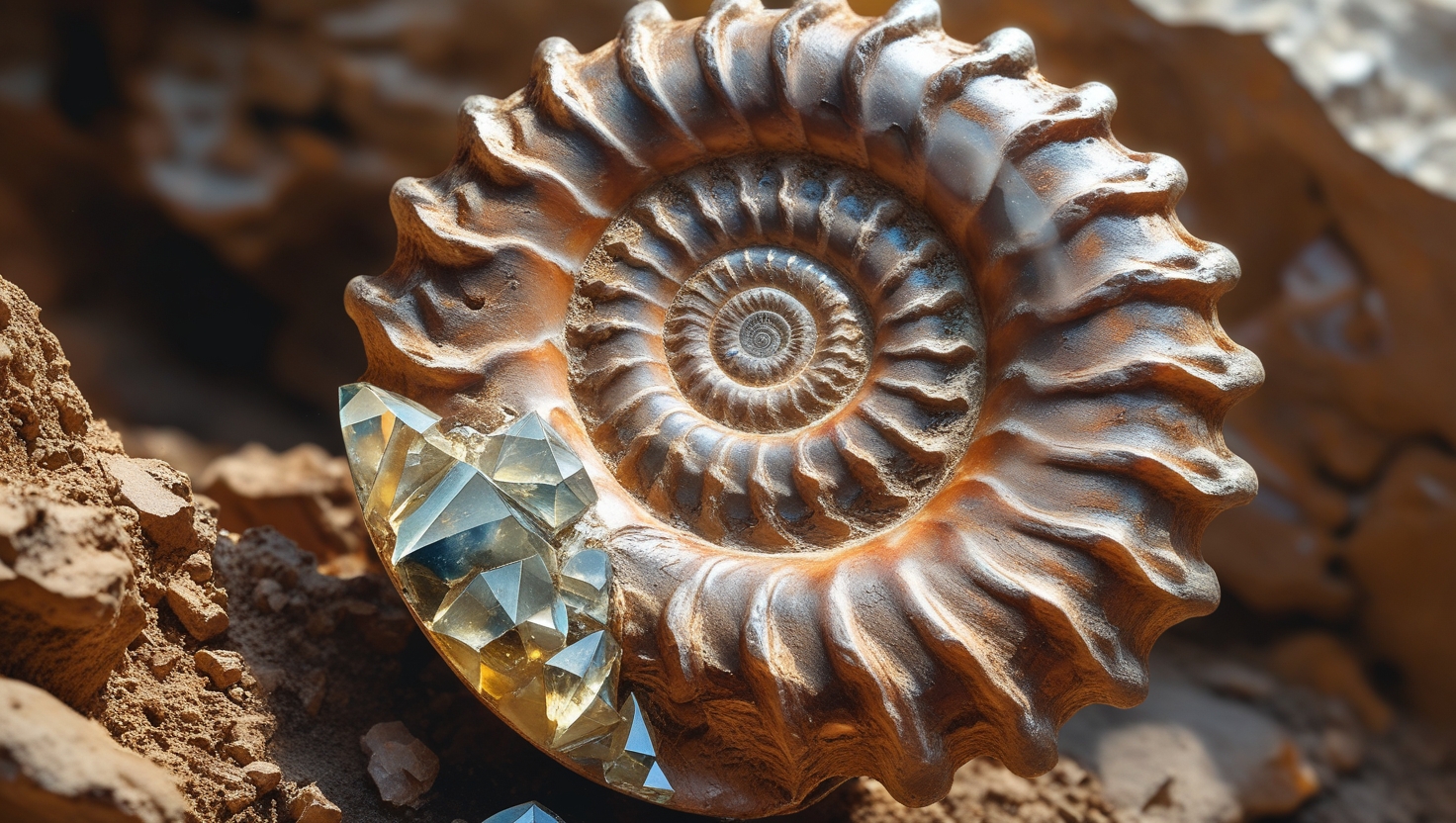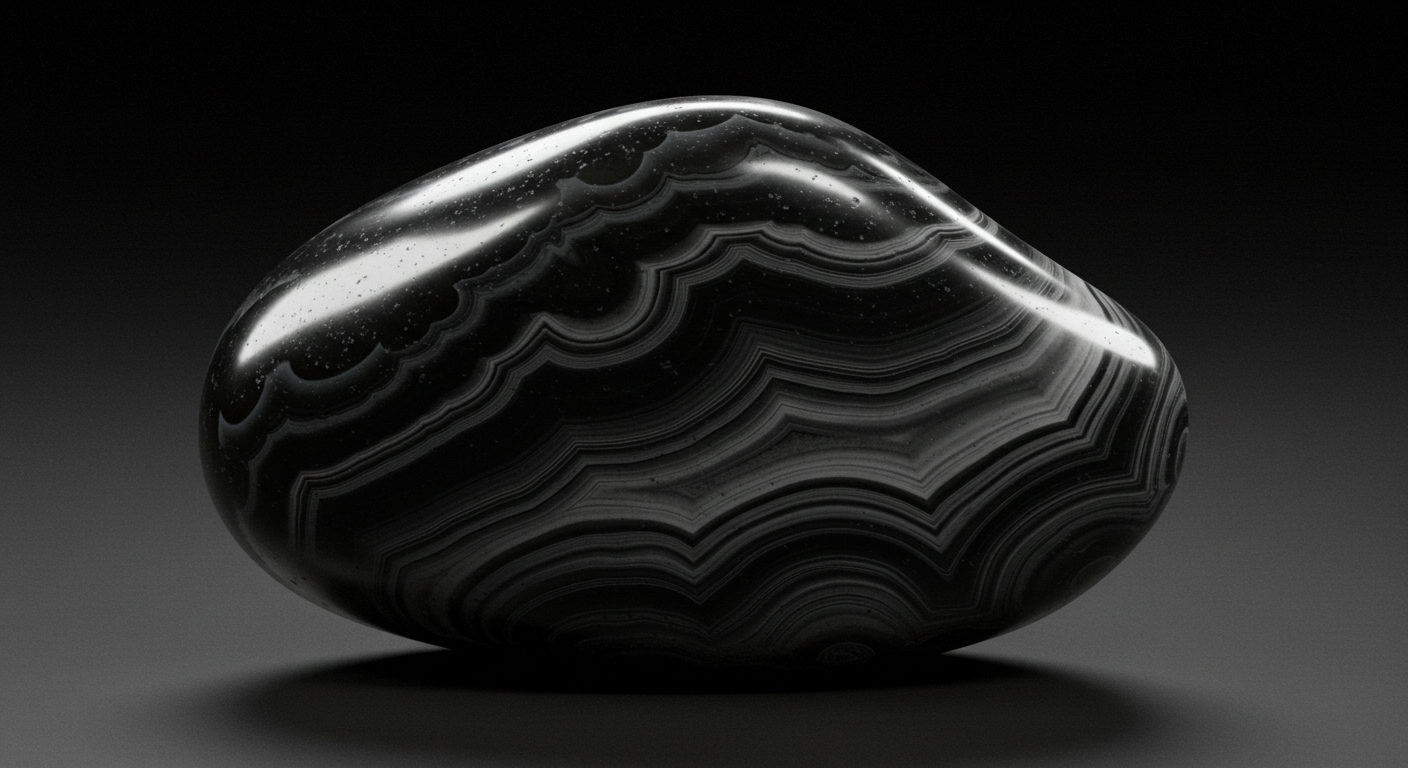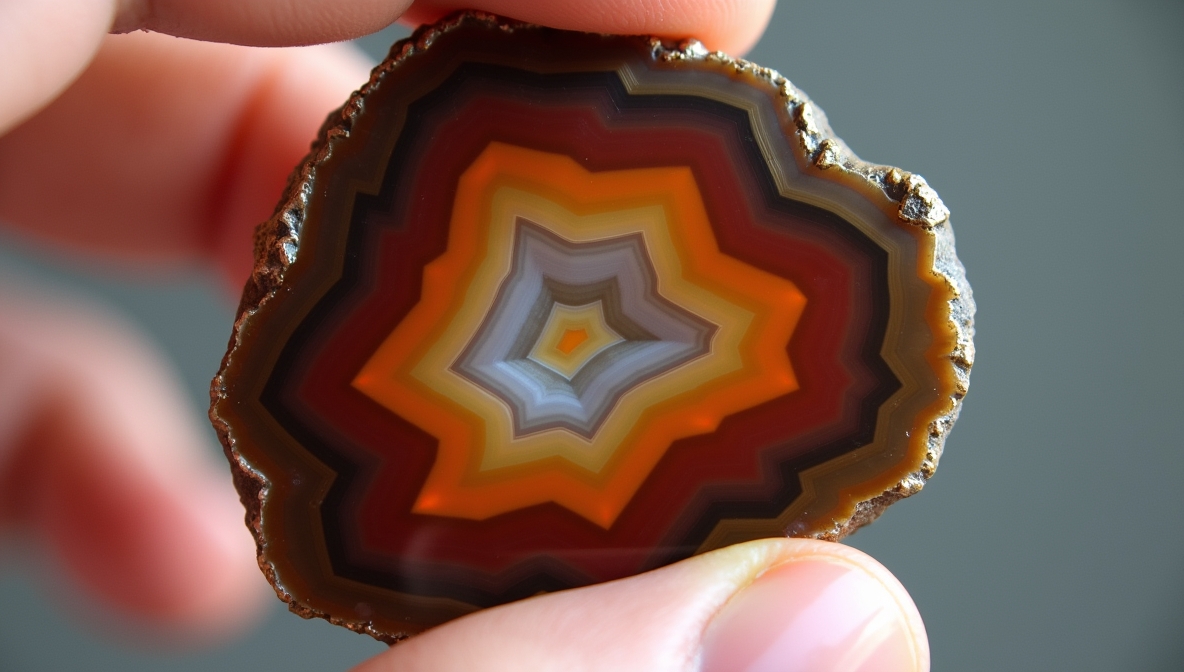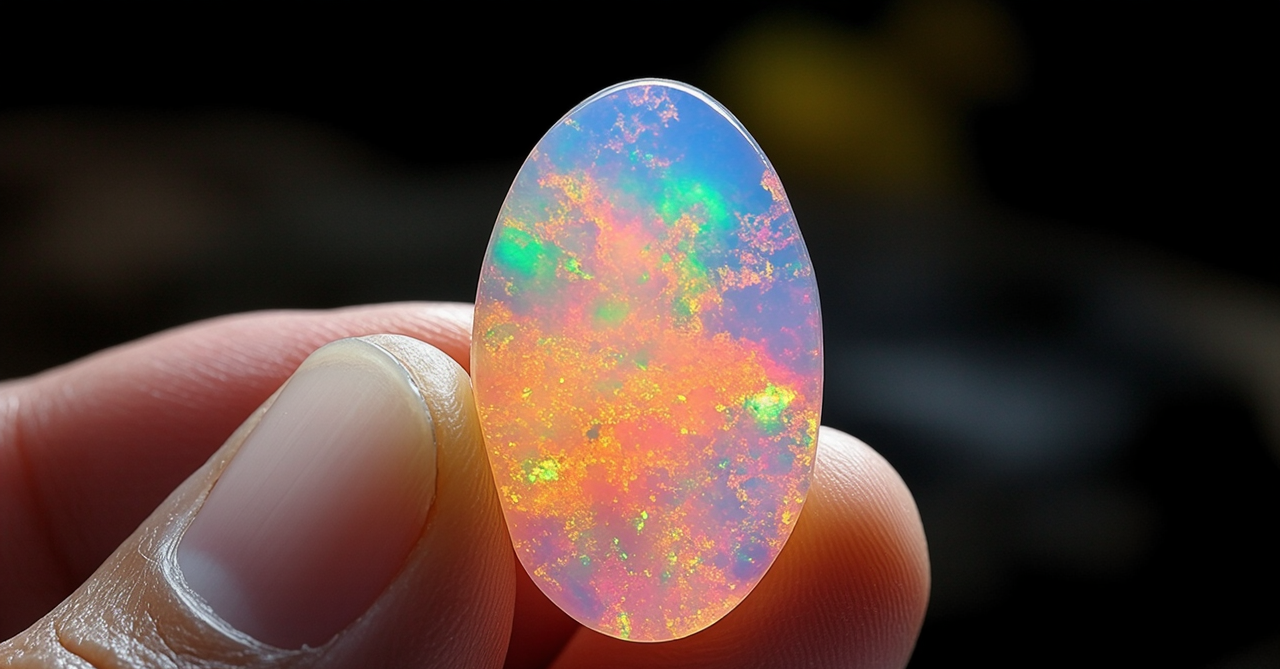See this incredible Holding Earth is Ancient Heart in the Palm. Explore its intricate patterns and natural beauty.
Through the lens, the ordinary becomes extraordinary, and the vastness of geological time can be held within the palm of a hand. Consider a specific image that embodies this power: a close-up photograph focused intently on a polished ammonite fossil slice, carefully cradled between a thumb and forefinger. This is more than a simple picture; it is a profound visual dialogue between ancient history and living touch, between intricate natural form and human curiosity, a portal to the deep past framed by the landscape of the present.
The subject, brought into sharp, breathtaking focus by the close-up perspective, is the ammonite fossil slice. Its form is immediately intriguing, a cross-section revealing what lies beneath an unassuming exterior. The fact that it has been “cut in half” is crucial – it signifies a deliberate act of revelation, a human decision to unlock the secrets held within the stone. The surface presented to the camera is polished, a process that smooths the cutting marks and enhances the inherent beauty of the internal structure, allowing light to penetrate and highlight the intricate details.
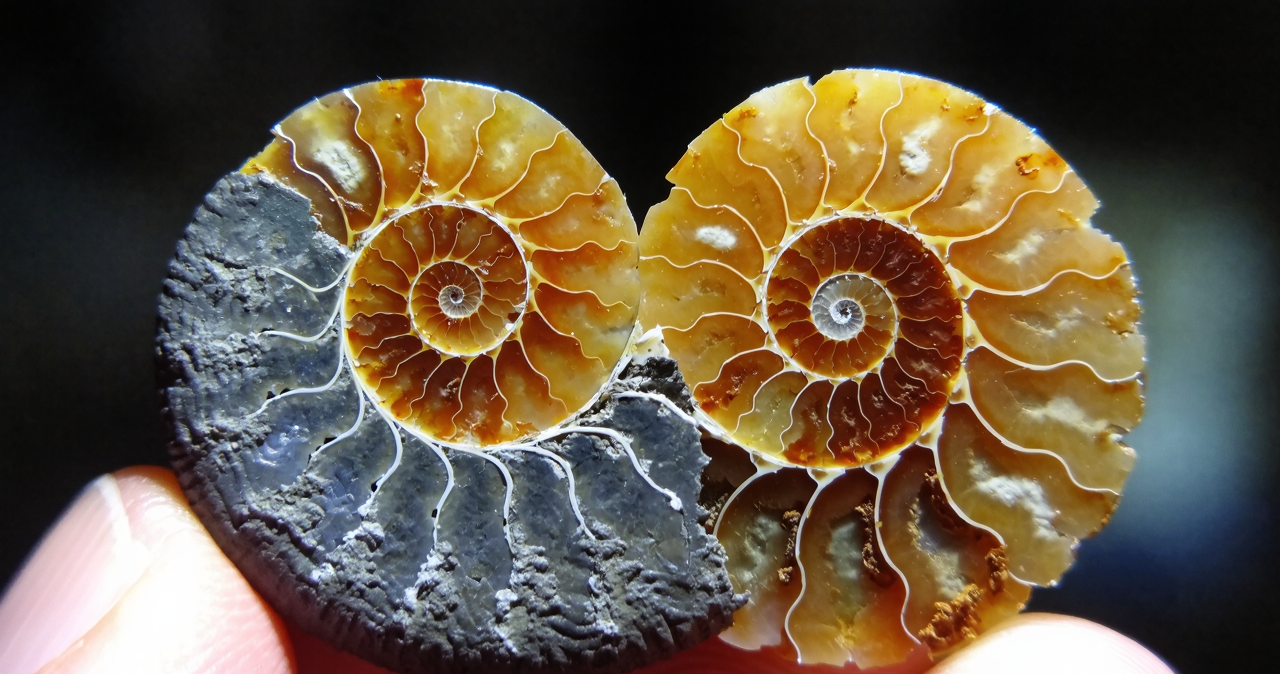
The most visually captivating element revealed by this cut is the “intricate spiral structure inside.” This is the signature of the ammonite, an extinct marine mollusc that swam the oceans hundreds of millions of years ago. The spiral is a perfect example of a logarithmic (or growth) spiral, a form found throughout nature, from galaxies to seashells, embodying principles of proportional growth. Seeing it preserved in stone is witnessing a fundamental mathematical pattern solidified by time. The spiral is composed of numerous chambers, or camerae, which were originally separated by thin walls called septa. These chambers were not living spaces; the ammonite animal lived only in the outermost, largest chamber. The internal chambers were filled with gas or liquid, allowing the ammonite to control its buoyancy, much like the modern nautilus.
In this photograph, these chambers are visible, filled with minerals deposited over vast timescales. The description highlights their colour: “brown and dark amber colored chambers.” These warm, earthy tones likely derive from iron oxides or other minerals present in the sediment or circulating groundwater during the fossilization process. The variation between brown and dark amber suggests different mineral compositions or concentrations in various chambers, painting a history of the fossil’s burial and mineralization. These colours add depth and richness to the image, transforming the former living spaces into cells of solidified time, filled with the hues of the earth itself. They provide a warm, organic contrast to the harder, more crystalline elements also present.
Within these brown and dark amber segments lies another crucial detail: “white, opalescent mineral deposits within each segment.” This is where geological transformation adds a layer of delicate beauty. As groundwater containing dissolved minerals seeped into the empty chambers after the ammonite’s death, minerals like calcite or aragonite were deposited, slowly filling the voids. The description “white, opalescent” is particularly evocative. “White” suggests purity, perhaps quartz or calcite. “Opalescent” is fascinating – it implies a play of light, not the vibrant spectrum of precious opal, but a pearly, iridescent sheen, perhaps caused by the microstructure of the deposited mineral or the way light reflects off the layered surfaces within the chamber fillings. Seeing these luminous, lighter deposits contained within the darker, earthy chambers creates a striking visual contrast, like captured moonlight or tiny pearls nestled within a labyrinth of amber. The fact that these deposits are within each segment emphasizes the meticulous, chamber-by-chamber filling process that occurred over eons. Each chamber holds its own mini-story of mineralization, a tiny, distinct treasure chest of geological time.
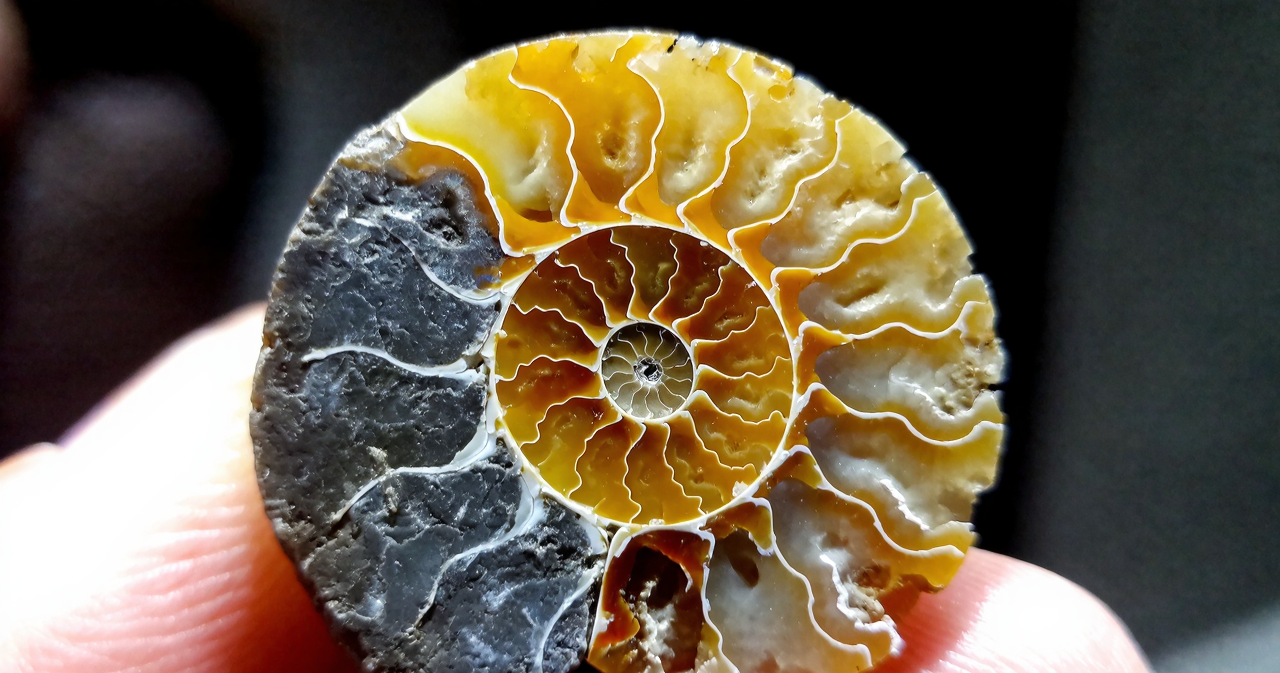
While the polished interior reveals the intricate beauty within, the photograph also shows the “outermost layer of the shell,” described as “gray or black and rough.” This part of the slice offers a stark contrast to the smooth, colourful, and luminous interior. This is the fossil’s original exterior, the protective shell that housed the living creature. Its colour, gray or black, likely reflects the original shell material or the matrix rock it was embedded in. The “rough” texture is key; it speaks of its journey through geological time, perhaps the result of weathering, the impact of being cut from the rock, or simply the natural texture of the outer shell material. This roughness provides a palpable contrast to the polished inner face, highlighting the transformation the fossil has undergone – from a rough exterior hiding its inner complexity to a revealed slice where both the raw origin and the internal artistry are simultaneously visible. It reminds us that beauty often lies beneath a less remarkable surface.
Crucially, this piece of ancient history is being “held between a thumb and forefinger.” The human hand is not just a prop; it is an integral part of the photograph’s narrative. The description states it’s a “close-up photograph,” which inherently brings the hand into prominence. Even if the hand were slightly less sharp than the fossil (though the prompt says it’s held between fingers, implying they are part of the focused area, especially in a close-up), the sheer proximity and scale relative to the fossil make it impossible to ignore. The fingers provide essential context – they show the size of the fossil slice, grounding the ancient object in a human scale.
The act of holding is significant. It is a direct, physical connection between a living being and an object that represents millions of years of Earth’s history. The way the thumb and forefinger cradle the slice conveys a sense of care, curiosity, and perhaps wonder. It is a moment of intimate examination, a tangible link across unfathomable gulfs of time. The human touch bridges the biological world of the viewer with the fossilized remnants of a long-extinct creature.
The background is described as “blurry and indistinct.” This is a classic photographic technique, using shallow depth of field to isolate the subject and eliminate distractions. The blur ensures that the viewer’s eye is drawn directly and entirely to the intricate details of the ammonite slice and the hand holding it. It creates a sense of intimacy, removing the object from its environment and presenting it as a subject of pure contemplation. The indistinct nature prevents any specific context from overwhelming the universal themes of time, form, and connection.
Putting all these elements together, the photograph becomes a profound visual essay. It explores the journey of an ancient life form from a swimming marine creature to a fossilized relic, and then to a piece of revealed art held in a human hand. The spiral is not just a shape; it is a symbol of growth, evolution, and the cyclical nature of life and time. The chambers, once filled with gas to navigate the ancient seas, are now filled with minerals, silent witnesses to geological processes. The warm browns and ambers speak of the earth, while the opalescent white deposits add a touch of luminous magic, a hidden light within the darkness. The rough outer shell is a reminder of its original protection and its journey through sediment and rock.
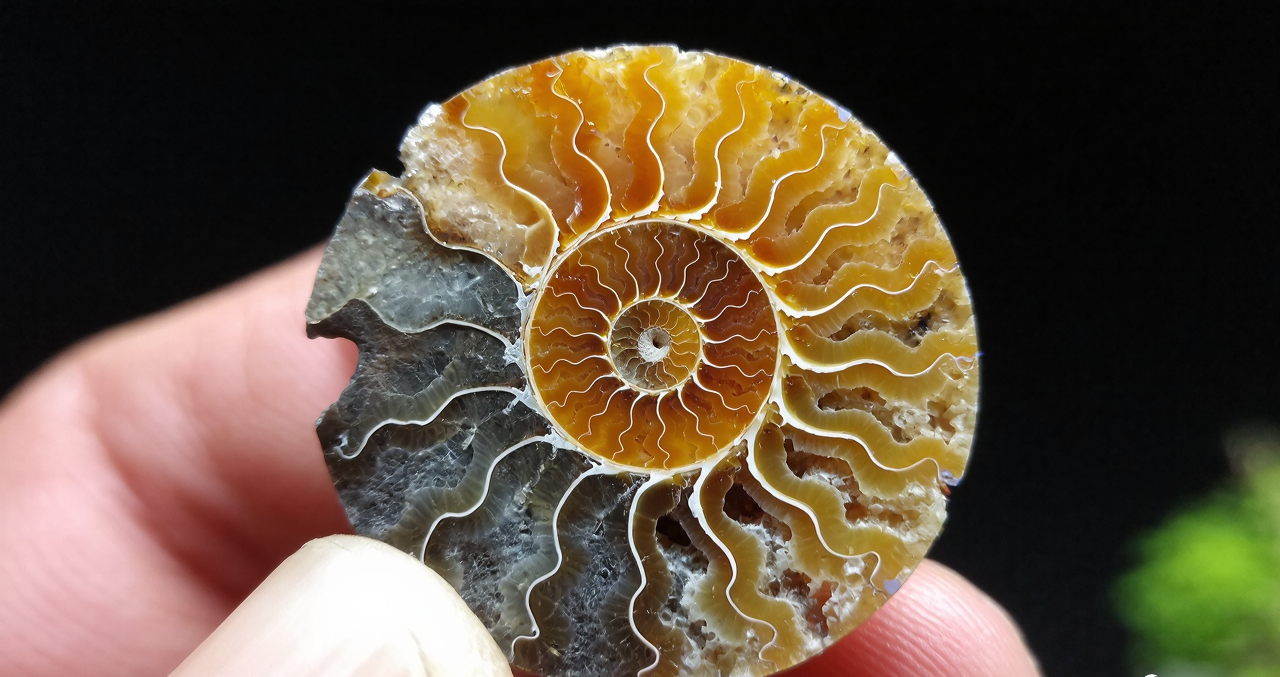
The hand holding the fossil grounds this ancient history in the present moment. It highlights humanity’s role in discovering, preserving, and appreciating these treasures. The act of holding this slice is a tangible connection to deep time, a humbling reminder of the vastness of Earth’s history compared to a human lifespan. It’s a moment where the ephemeral touches the enduring. The focus on the hand (implied by the close-up holding) could also, in some interpretations, invite reflection on the texture and history of human skin – its own layers, its own story of time and experience, though on a vastly different scale than the ammonite’s.
The photograph itself, as a piece of art, elevates the fossil from a scientific specimen to an object of aesthetic beauty. The lighting, composition, and focus are all carefully chosen to highlight the ammonite’s intricate structure and vibrant mineral fillings. It’s a testament to the power of photography to transform perception, making us see the extraordinary in the details of the natural world.
In conclusion, this close-up photograph of a polished ammonite fossil slice held between a thumb and forefinger is a masterpiece of visual storytelling. It unveils the intricate spiral structure and beautifully mineralized chambers of an ancient marine creature, showcasing geological processes that transformed organic life into enduring stone over millions of years. The contrast between the warm, earthy chambers and the luminous, opalescent deposits, and the rough outer shell versus the polished interior, creates visual richness and tells a story of transformation. The human hand, holding this relic of deep time, provides scale and introduces the profound theme of connection between the present and the ancient past. Set against a blurry, indistinct background, the image focuses our attention entirely on this intimate interaction between human and fossil, inviting contemplation on time, beauty, transformation, and our place within the vast, spiraling history of life on Earth. It is, truly, holding a piece of the planet’s ancient, intricate heart in the palm.
